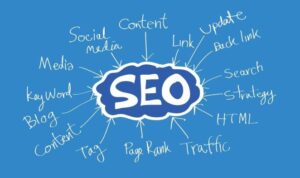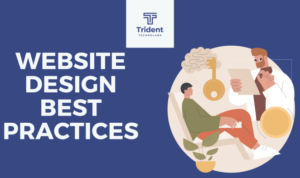Sales Copywriting Techniques takes center stage in the marketing world, offering a powerful tool to boost conversions and engage audiences with captivating content. Dive into the art of crafting compelling copy that drives action and resonates with your target audience.
Overview of Sales Copywriting Techniques

Sales copywriting is all about crafting persuasive and compelling content that drives action from potential customers. It plays a crucial role in marketing by influencing people to make a purchase, sign up for a service, or engage with a brand. The power of well-written sales copy can’t be underestimated, as it directly impacts conversions and ultimately the success of a marketing campaign.
Impact of Sales Copywriting Techniques on Conversions
Effective sales copywriting techniques can significantly boost conversions by tapping into the emotions, desires, and pain points of the target audience. By using persuasive language, storytelling, and a clear call-to-action, copywriters can create a sense of urgency and convince prospects to take the desired action. For example, a well-crafted sales email with a compelling subject line and engaging content can lead to higher open rates and click-through rates.
Examples of Successful Sales Copywriting Campaigns
1. Apple’s “Think Different” Campaign: Apple’s iconic campaign focused on inspiring customers to think differently and embrace innovation. The simple yet powerful copy resonated with audiences and helped position Apple as a leader in the tech industry.
2. Nike’s “Just Do It” Slogan: Nike’s slogan has become synonymous with motivation and determination. The short but impactful phrase has been used in various marketing campaigns to inspire athletes and consumers to push their limits and achieve greatness.
3. Airbnb’s “Live There” Campaign: Airbnb’s campaign emphasized the experience of living like a local when traveling, rather than just staying in a hotel. The copy highlighted the unique and authentic experiences that Airbnb offers, appealing to travelers looking for a more personalized and immersive stay.
Understanding the Target Audience
Knowing your target audience is crucial in sales copywriting as it helps you tailor your message to resonate with their needs and preferences. By understanding your audience, you can create compelling copy that speaks directly to them, increasing the chances of driving sales.
Researching the Target Audience
Researching your target audience involves gathering information about their demographics, psychographics, behaviors, and preferences. You can conduct surveys, interviews, and analyze data to gain insights into what motivates them to make a purchase. By understanding their pain points and desires, you can create copy that addresses their specific needs.
- Utilize social media analytics to gather data on your audience’s interests and preferences.
- Engage with your audience through comments, messages, and polls to understand their feedback and opinions.
- Study your competitors’ audience to identify potential customers who might be interested in your products or services.
Tailoring your copy to the target audience can significantly improve sales by creating a connection and building trust with potential customers.
Crafting Compelling Headlines: Sales Copywriting Techniques
When it comes to sales copywriting, headlines play a crucial role in grabbing the reader’s attention and enticing them to continue reading the rest of the content. A compelling headline can make or break the success of a sales campaign, as it is the first thing that potential customers see and can determine whether they will engage further with the product or service being offered.
Tips for Creating Attention-Grabbing Headlines
- Keep it concise and clear: Make sure your headline is easy to understand and gets straight to the point.
- Use power words: Incorporate words that evoke emotion or create urgency to prompt action.
- Pose a question: Asking a thought-provoking question can pique curiosity and draw readers in.
- Highlight benefits: Focus on the benefits of your product or service to show readers how it can improve their lives.
- Use numbers: People are drawn to headlines with numbers, as they promise specific and actionable information.
Examples of Effective Headlines
-
“Unlock the Secrets to a Healthier Lifestyle in Just 30 Days!”
-
“Get Your Dream Job Today with Our Expert Resume Writing Service”
-
“Revolutionize Your Skincare Routine with Our Organic Beauty Products”
Utilizing Persuasive Language
Using persuasive language in sales copy is crucial to capturing the attention of potential customers and convincing them to make a purchase. By appealing to emotions, telling compelling stories, and using persuasive techniques, copywriters can influence buying decisions effectively.
Storytelling and Emotional Appeal, Sales Copywriting Techniques
Utilizing storytelling in sales copy can create a personal connection with the audience, making the product or service more relatable. By sharing stories of real people benefiting from the product or service, customers can see themselves in similar situations, leading to increased trust and a higher likelihood of making a purchase. Emotional appeal, on the other hand, taps into the customer’s feelings and desires, making them more inclined to take action. By evoking emotions such as joy, fear, or excitement, copywriters can create a sense of urgency and drive customers to buy.
- Share customer testimonials and success stories to showcase real-life benefits.
- Use power words like “amazing,” “exclusive,” or “limited time” to create a sense of urgency.
- Highlight the emotional benefits of the product or service to connect with customers on a deeper level.
Influence on Buying Decisions
Persuasive language can significantly impact buying decisions by influencing customers’ perceptions and behaviors. By using persuasive techniques effectively, copywriters can guide customers through the sales funnel, from awareness to consideration to purchase. Whether it’s through compelling storytelling, emotional appeal, or persuasive language, the ultimate goal is to persuade customers to take action and make a purchase.
Remember, the words you choose can make a difference in whether a customer decides to buy or not. Use persuasive language wisely to influence buying decisions effectively.
Creating a Strong Call to Action (CTA)

A call to action (CTA) is a crucial element in sales copy that prompts the reader to take a specific action, such as making a purchase, signing up for a newsletter, or contacting the company. It serves as the final push to convert a prospect into a customer and is essential for driving conversions and achieving sales goals.
Examples of Powerful CTAs and Why They Work
- Example 1: “Shop Now and Get 50% Off Your First Purchase!”
- Example 2: “Sign Up Today for Exclusive Access to Limited-Time Offers!”
- Example 3: “Don’t Miss Out – Reserve Your Spot Now!”
These CTAs work effectively because they create a sense of urgency, offer a clear benefit to the customer, and use strong action verbs to motivate immediate action. By highlighting the value proposition and emphasizing the limited availability of the offer, these CTAs compel the reader to act quickly and decisively.
Placement and Design Considerations for Effective CTAs
- CTAs should be strategically placed throughout the sales copy, including at the beginning, middle, and end, to ensure maximum visibility and impact.
- Use contrasting colors, bold fonts, and compelling visuals to make the CTA stand out and draw the reader’s attention.
- Keep the CTA concise and clear, using persuasive language that conveys a sense of urgency and excitement.
Formatting and Layout Tips
In the world of sales copywriting, formatting and layout play a crucial role in capturing the reader’s attention and keeping them engaged. The way your content is presented can significantly impact its readability and effectiveness in converting leads into customers.
Utilizing Bullet Points
Using bullet points is a great way to break down information into digestible chunks, making it easier for readers to scan through key points quickly. Bullet points help highlight important features or benefits of your product or service, making them stand out amidst the text.
- Keep your bullet points concise and to the point.
- Use bullet points to emphasize key selling points or benefits.
- Avoid lengthy paragraphs and opt for bullet points for better readability.
Implementing Subheadings
Subheadings are essential for organizing your content and guiding readers through the sales copy. They provide structure and help break up the text into sections, making it easier for readers to navigate and find the information they are looking for.
- Use clear and descriptive subheadings that give readers a glimpse of what each section entails.
- Ensure subheadings are consistent in style and format throughout the sales copy.
- Make use of subheadings to introduce new topics or highlight important information.
Leveraging White Space
White space, also known as negative space, is the empty space around text and graphics in your sales copy. It plays a crucial role in enhancing readability by giving the content room to breathe and preventing it from looking cluttered.
- Utilize white space strategically to separate different sections and paragraphs in your sales copy.
- Avoid overcrowding your content and allow for adequate spacing between elements for a clean and organized look.
- White space can draw attention to important elements, such as calls to action or key points, by creating contrast with the surrounding content.
A/B Testing and Optimizing Copy
When it comes to sales copywriting, A/B testing plays a crucial role in determining what resonates with your audience and drives conversions. By testing different versions of your copy, you can gather valuable data to optimize your messaging for better results.
Analyzing A/B Test Data
- Look at conversion rates: Compare the performance of Version A against Version B to see which one yields higher conversions.
- Analyze engagement metrics: Dive into metrics like click-through rates, bounce rates, and time spent on page to understand how users interact with each version.
- Consider feedback: Collect feedback from users through surveys or comments to gain insights into what resonates with them.
Optimizing Copy Based on Test Results
- Adjust headlines: If Version B’s headline outperforms Version A, consider implementing a similar style in future copy.
- Tweak CTA language: If users respond better to a specific call to action in one version, incorporate that language into other copy.
- Refine messaging: Use data from A/B tests to refine the overall messaging of your copy to better align with audience preferences.





